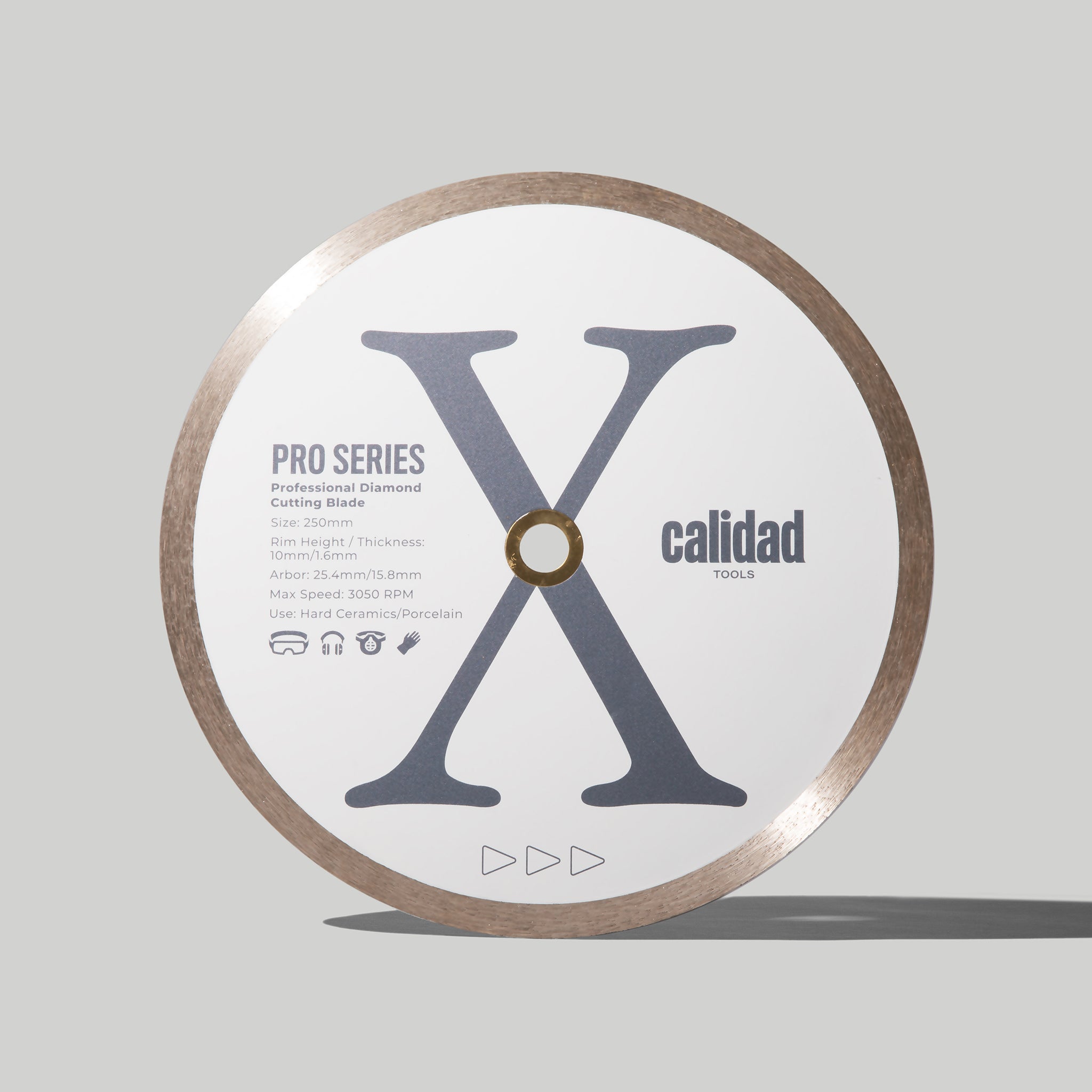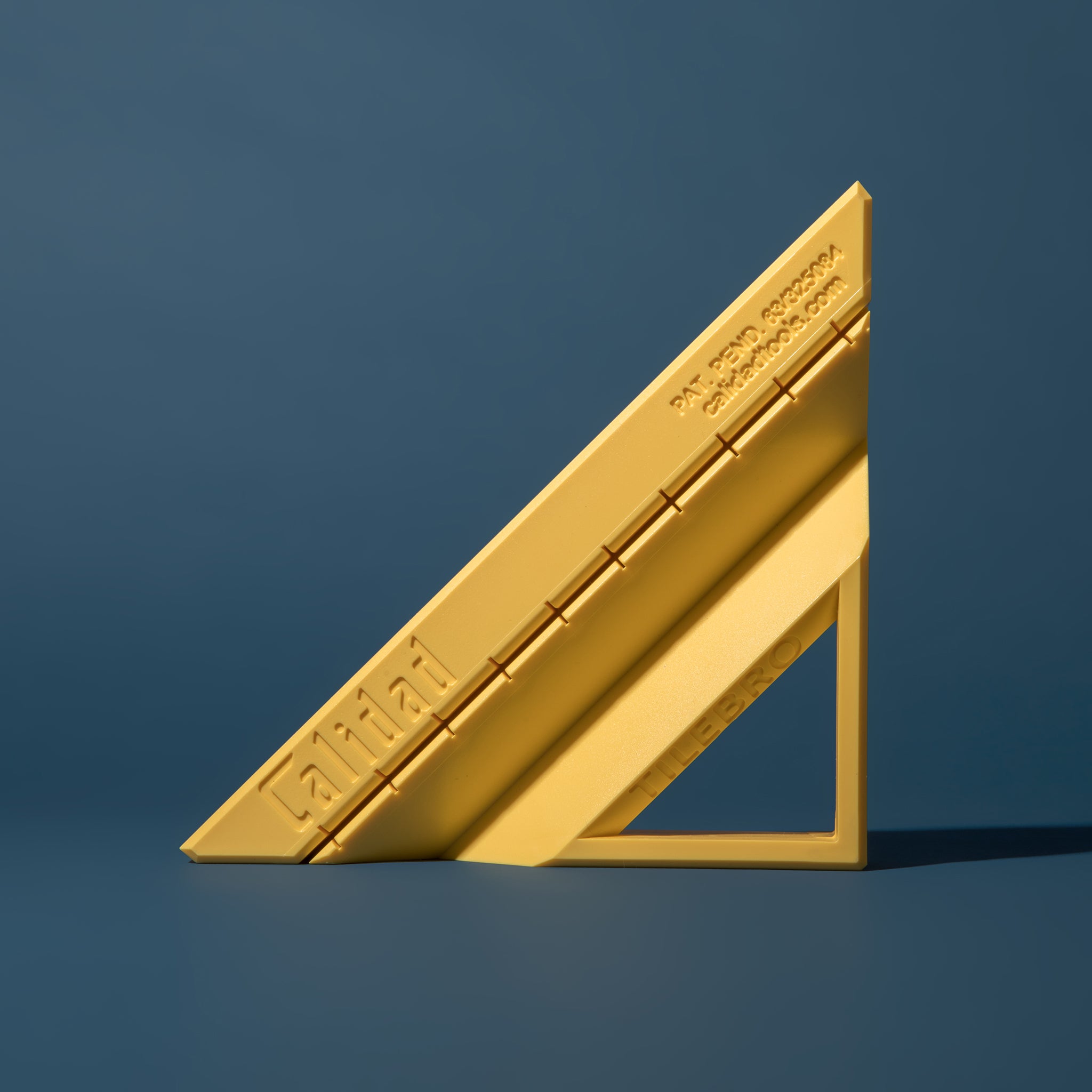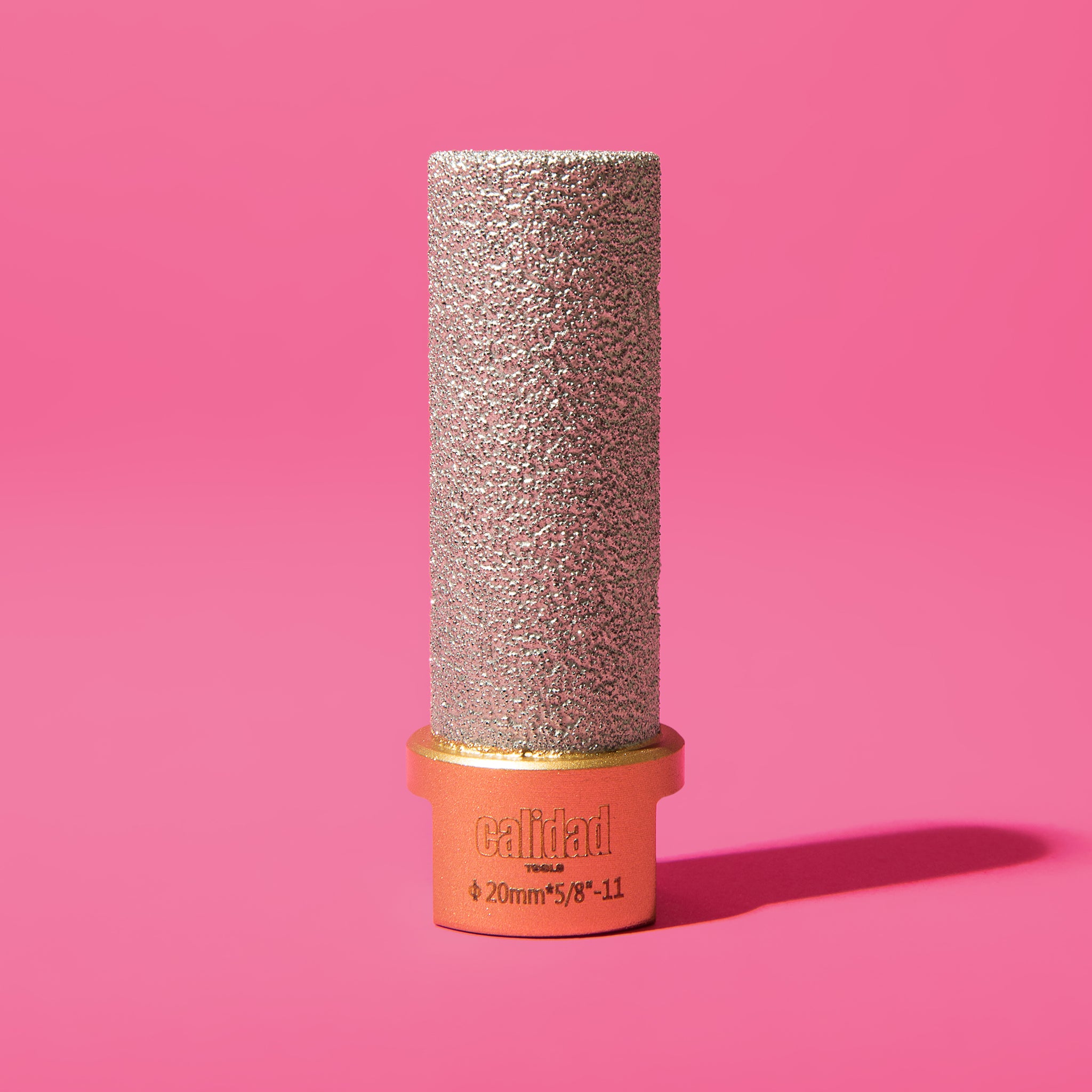Patterned Floor Tiles: Everything You Need To Know About Patterned Tile
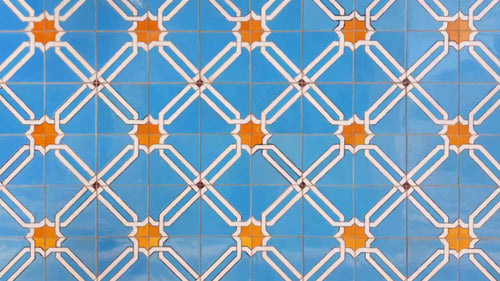
Patterned tiles are as old as human civilization. In the olden times, it was a way to flex your wealth, but thanks to the Industrial Revolution, they've become a common sight almost everywhere and give our spaces a touch of style.
Besides their aesthetic appeal, patterned tiles are also pretty durable and versatile. This makes them perfect for high-traffic areas in your home, such as kitchens, entryways, and kitchens. These tiles are also a pretty cool option for a kitchen backsplash.
With so many different shapes, patterns, styles, and materials, choosing the right patterned tile can get exhausting. There's no need to fret. I've prepped this complete guide to patterned floor tiles, which covers everything from their impact on the space to how and why you should install them.
What Are Patterned Floor Tiles?

These tiles are made from a wide variety of materials, including:
*Ceramic
*Porcelain
*Marble
*Natural stone
*Cement
As for where these tiles are best used - the sky's the limit. They'll give a dash of style to just about any space. With that said, they're most commonly used in high-traffic areas such as hallways, entryways, kitchens, and bathrooms.
Of course, nothing is stopping you from using these tiles for backsplashes.The main appeal of pattern tile is that it provides the space with texture and visual interest.
On top of that, they're super durable and are easy to clean. All you need is a bucket of water and a mop.
Why Should I Install Patterned Floor Tiles?
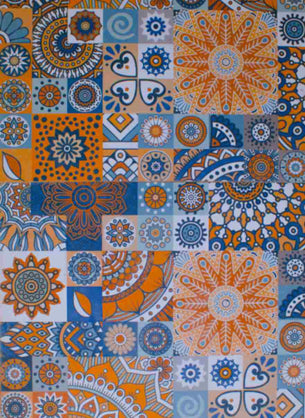
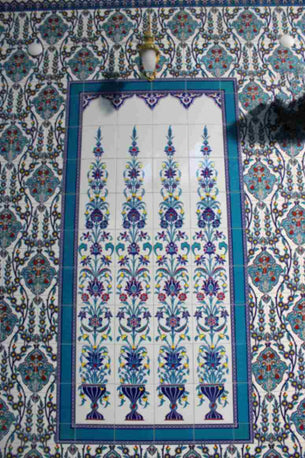
There are several reasons why you should install patterned tiles:
Aesthetic appeal: Thanks to their intricate design, these tiles add crucial texture and visual interest. This makes them perfect for adding personality to the space. You can use patterned tile to complement and emphasize other design elements in the space, such as your furniture or wall color.
Durability: As I mentioned in the section above, patterned tiles are just as durable as any other tile. This makes them ideal for high-traffic areas since they can withstand spills and stains and are way less likely to crack compared to other types of flooring.
Versatility: Patterned tiles come in all kinds of patterns, colors, and materials. These tiles offer endless design possibilities. You can use them to add a more contemporary feel to a room, or, you can go all out and get some luxury patterned tile to give the room a more retro, turn-of-the-century feel.
Easy maintenance: Tiles are super easy to maintain. Just give it a good sweep and a mop from time to time and your golden. And since they're waterproof, you can use them for shower flooring, kitchen backsplashes, and (of course) entryways.
Value: Adding patterned floor tiles can make a home or business more valuable because many people like this feature. It's also a good investment because these tiles stay looking nice and last well for a long time.
Are There Different Types Of Patterned Floor Tiles?
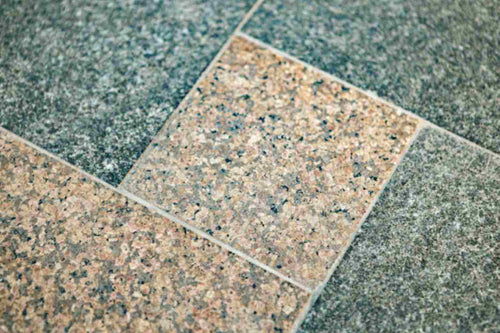
Although these tiles feature tons of patterns and are available in tons of geometric shapes, the materials they're built out of are limited.
Here are some of the most common patterned tile types:
Ceramic: This is the most common material for both floor and wall tiles. Ceramic patterned tiles come in a wide range of colors, patterns, shapes, and sizes, which makes them a great choice for just about any space.
Porcelain: Porcelain is very similar to ceramic but is a bit more durable because it's denser. Porcelain tiles are more expensive than ceramic tiles, but the investment is well worth it since they can withstand tons of punishment without breaking.
Natural stone: Tiles made out of natural stone, such as granite or marble, are the most expensive but most luxurious. These tiles come in a relatively wide range of patterns that will surely give space in your home a bolder note.
Vinyl: Tiles made out of vinyl are a cost-effective alternative to "mineral tiles." They come in all kinds of shapes, sizes and formats. You can even get vinyl tiles that mimic other materials, such as wood, marble, granite, and more.
Cement: Cement tiles are popular thanks to their bold and colorful patterns. These tiles are made out of a mix of sand, mineral pigments, and, of course, cement.
What Is The Most Popular Patterned Tile Design?
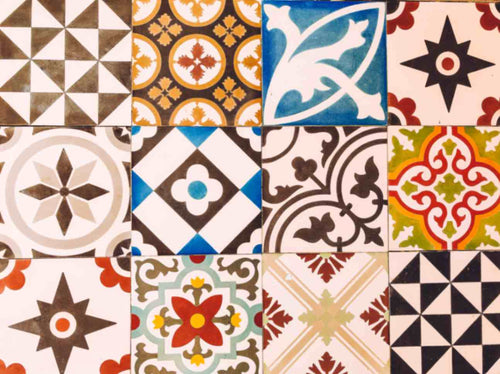
There are quite a few patterned floor tiles that are popular, these include:
Geometric patterned tiles: Geometric patterns are trendy in patterned floor tiles at the moment. These patterns have strong, angular shapes and often use different colors for a bold and striking look.
Encaustic-style tiles: Tiles in the encaustic style draw inspiration from traditional cement tiles, showcasing detailed patterns and designs. They are commonly employed to evoke a vintage or retro ambiance in a space.
Large-scale patterns: These tiles are gaining popularity, featuring designs that cover more space and make a bold statement in a room.
Mix-and-match tile patterns: Mixing and matching different tiles is an age-old trend and will bring your space a more bold, personalized look.
In general, patterned floor tiles open up many design options, and current trends show a preference for bold, dramatic, and personalized designs.
Are Patterned Floor Tiles More Expensive Than Regular Tiles?


The price of patterned tiles depends on a few factors, such as the type of material, the size of the tile, how intricate the pattern is, and the brand that made it.
With that said, patterned tiles are more expensive than other tiles because their manufacturing process is more complex. You need a lot of specialized (and expensive) tools and machines to ensure the patterns are consistent on each tile.
For instance, natural stone tiles with complicated patterns are more expensive than porcelain tiles.On the other hand, custom-painted, elegant ceramic tiles can cost you an arm and a leg because of all the extra labor involved.
Of course, the intricacy of the pattern isn't the only thing that determines the price of these tiles - there's also the quality of the material.Natural stone tiles are the most expensive, followed by ceramic and cement tiles. The cheapest option is vinyl tiles.
Can I Use Patterned Floor Tiles For Outdoor Spaces?

Decorative floor tiles with patterns can enhance the aesthetics of outdoor areas such as patios or gardens. Nevertheless, it is crucial to go for tiles explicitly crafted for outdoor applications, ensuring they possess the resilience to endure exposure to the elements.
Among the most popular choices for outdoor decor, you can consider natural stone tiles such as slate, granite, or limestone. Additionally, porcelain or ceramic tiles tailored for outdoor use are popular options.These tiles are commonly treated to impart slip-resistant properties and shield them from potential damage caused by water or UV rays, aligning both functionality and decor.
When picking patterned floor tiles for outdoor spaces, think about the size and shape of the tiles. Bigger tiles work well outdoors, giving a smooth and unified appearance. Pick tiles that are easy to clean since outdoor areas can get dirty.
In general, with the right tiles and good installation, patterned floor tiles can make outdoor spaces like patios or gardens look lovely and work well. To be sure everything is done right, it's smart to talk to a professional tile installer. They can make sure the tiles are put in correctly and are suitable for outdoor use.
How Do I Install Patterned Tile?
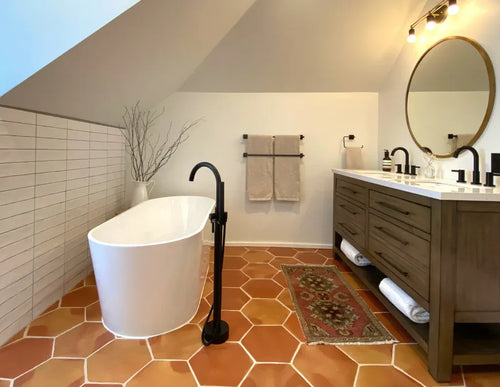
Installing patterned floor tiles can be tricky, so it's usually a good idea to get a professional tile installer for the job. But if you're into DIY projects and feel confident using the right tools and materials, you can give it a shot yourself.
Here are the basic steps to install patterned floor tiles:
Prep the surface: Before you start tiling, you need to make sure the surface is as clean and dry as possible. If the surface is uneven, you apply a level compound. This will save you a lot of headaches later.
Plan the tile layout: Before actually installing the tiles, you need to plan the layout. The best way to do that is by doing a dry run. Find the center of the room and start laying tiles from there. This will ensure the patterns on the tiles are even and symmetrical. Once you've made sure the pattern is well-set, you can take the tiles out and go to the next step.
Cut the tiles: Installing tiles always involves cutting some of them so they can fit in the corners. I recommend you use our Butter Cutter angle grinder blade for long, straight cuts and our Durty Kurt angle grinder blade for curved cuts and miters.
Apply adhesive: With the tiles cut and prepped, it's time to start applying the adhesive. Use a notched trowel to apply a layer of adhesive that's not too thin and not too thick.
Start laying the tiles: Before laying the tile, I recommend you butter it up. Simply apply a thin layer of adhesive on the tile's backside before placing it into the adhesive on the floor. This will ensure the tile doesn't crack or become detached over time. Firmly place the tile in place and make sure the grout lines are even. You can do this by using spacers.
Grout the tile: Once the adhesive is all dried, you can start grouting the tiles. First, remove the spaces and then fill the tiles with the grout mix. Make sure to clean any excess grout with a wet sponge.
Installing patterned floor tiles on your own can take a lot of time and be quite challenging. If you're not sure you can do it right, it's better to hire a professional tile installer. They can make sure the tiles are put in correctly and are safe and secure.
How Do I Maintain Patterned Floor Tiles?
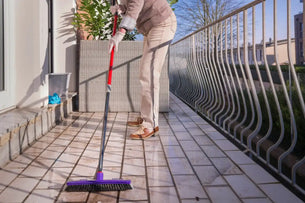
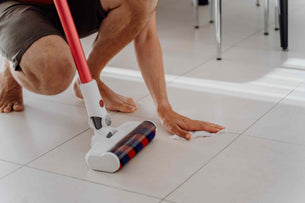
Mop and vacuum the tiles regularly: Debris and dirt can scratch the surface of the tiles. This is why it's crucial you clean and vacuum them at least once a week.
Use A pH-neutral tile cleaner: Abrasive or strong cleaners can damage the tiles. I recommend you get a pH-neutral tile cleaner and use it to mop the tile.
Clean up Spills ASAP: If you don't take care of spills immediately, the standing water can seep under the grout lines and cause damage to your tiles.
These tips will keep your patterned floor tiles looking great for a long time. If you have questions about cleaning or taking care of your tiles, ask a professional tile installer or the tile manufacturer for advice.
Summary
No matter the type of space, patterned floor tiles will give it that dash of personality and texture that'll make everyone go:
"Wow!"Sure, these tiles are a bit more expensive than regular ones, but they're just as durable and will make the value of your property go up. If you need any tools for installing tiles, feel free to browse our shop.
We offer a wide range of tiling tools - from simple stuff such as grout sponges and spacers to specialized tile diamond cutters and drill bits.

